The Euphorbia Suzannae is native to the Cape, in South Africa. Also known by its common name, Suzanne’s Spurge, this is a fast-growing succulent that is relatively easy to cultivate.
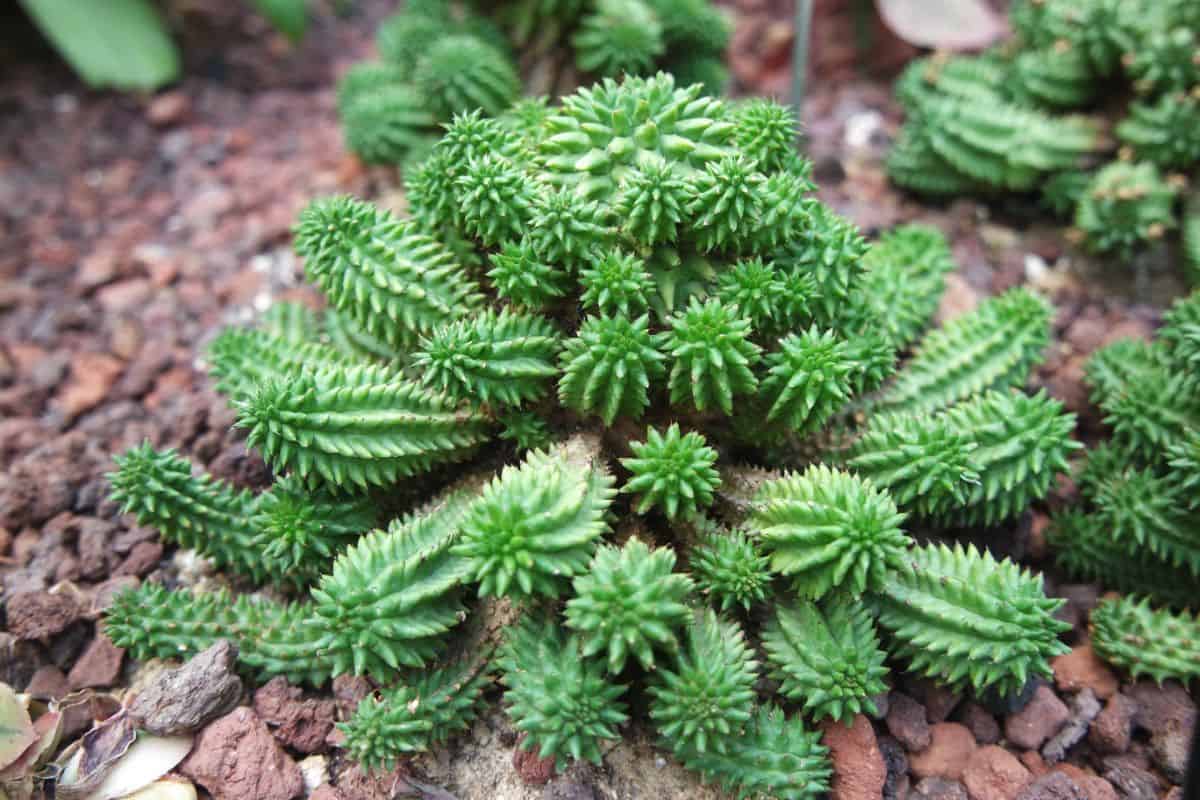
The South African climate is known to be mild, with temperatures that seldom fall to extreme lows. Therefore this plant will do well in areas where the weather is balmy and the overnight temperatures are not too low.
The Euphorbia Suzannae is not a very large plant. It seldom grows taller than about 6 inches. This makes it ideal to keep as an indoor plant, and it will do well in pots in the right spot in your house.
This succulent should be handled with great care because it produces latex, which is a whitish sap that is toxic. It can cause a severe allergic reaction if it gets in contact with your skin. It is advisable to wear thick protective gloves when handling the Euphorbia Suzannae
Jump to:
Euphorbia Suzannae Appearance
| Name: | Euphorbia Suzannae |
| Soil: | Well-drained soil |
| Blooming: | Spring |
| Light: | Full sun to partial shade |
| Water: | When the soil is completely dry |
| Propagation: | Cutting and seeds |
The Euphorbia Suzannae typically grows in small clumps of hemispherical plants. They are not very tall, reaching a maximum height of 6-8 inches. The diameter might grow to a width of 30 inches if the plant is left to spread out.
The caudex, or central axis of the plant, will produce many new stems that will develop and branch out. The stems are brownish-green in color and are short and thick. They are slightly tapered towards the tip.
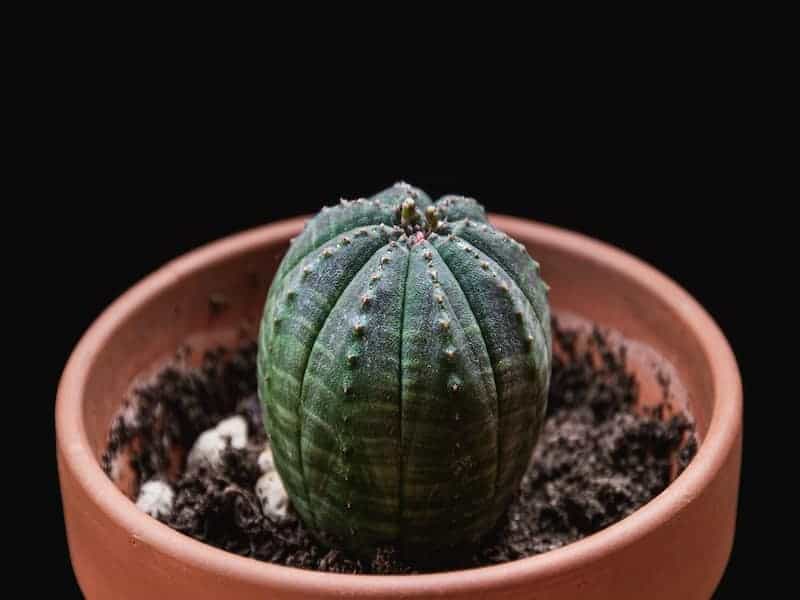
Buy it from:
The stems produce tubercles, or small, round bumps on the surface. These tubercles have rounded tips. The cyathia, or flower heads, are found at the tips of the stems. They have an outer layer that is made up of 4 or 5 overlapping lobes, with a small flower in the center.
No products found.
The Euphorbia Suzannae will traditionally flower towards the end of fall or the beginning of spring. Once the flowers have died off, you will be able to retrieve the seeds, which are deep red, or sometimes varying shades of purple.
Caring for the Euphorbia Suzannae
The Euphorbia Suzannae is one of those succulents that is very good at taking care of itself. It takes a little bit of nurturing to get it going, but once you have a fully established plant, it does not need much attention from you in order to continue thriving.
Light
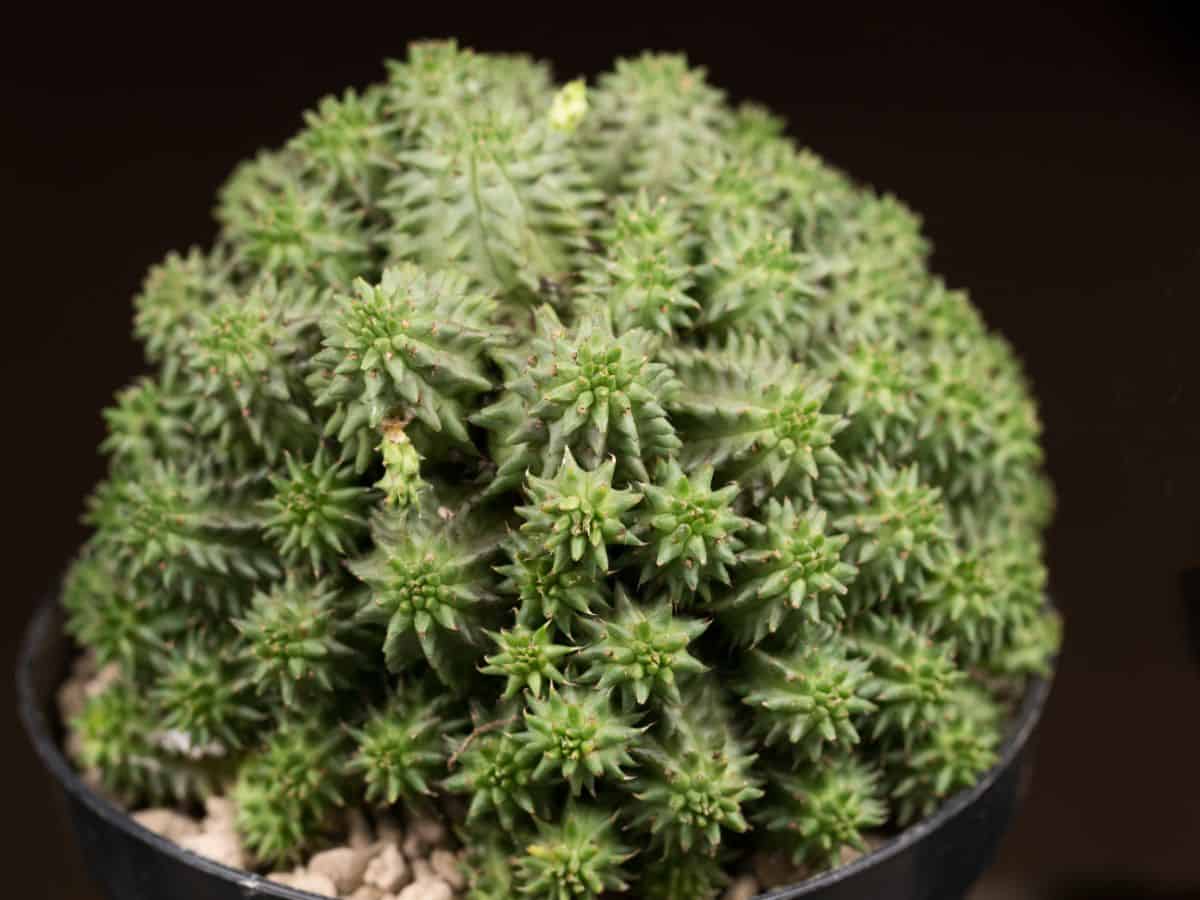
The Euphorbia Suzannae needs plenty of sunlight. Like most succulents, this one should be planted in a spot that has full sun to partial shade. They will do best if they receive at least 6 hours of direct sunlight per day.
If you are planting your Euphorbia Suzannae in a bed outdoors, it is important to choose just the right position for it. There is a fine balance between enough sunlight and too much sunlight.
Plants need sunlight in order to produce chlorophyll. By undergoing photosynthesis, plants can absorb carbon dioxide from the air. When the carbon dioxide is combined with the water that the plants receive, it is converted into sugars, which nourish the plant.
If the plant does not get sufficient light, photosynthesis can only occur in a limited capacity. Your Euphorbia Suzannae will then suffer from stunted growth.
On the other hand, if your Euphorbia Suzannae is exposed to much sunlight on extremely hot days, it could get burnt from the sun. Like a sunburn on human skin, this is highly damaging to plants.
If your Euphorbia Suzannae is kept exclusively as an indoor plant, it will be happiest in a warm, sunny room with lots of natural light. If you are in the northern hemisphere, this would be a south-facing room. Your succulent will grow beautifully on a sunny window sill.
If your house does not get enough natural sunlight, it is still possible to cultivate the Euphorbia Suzannae indoors, with the help of a grow light. These lights mimic natural sunlight and are designed for this purpose. They are available from most nurseries and garden centers.
Water
Many people tend to think that succulents need lots of water, but this is not always correct. The Euphorbia Suzannae, like many other similar succulents, needs very little water once it is a fully grown, established plant.
Water it by soaking the soil thoroughly, and leaving it to dry completely before watering again. This should be done approximately once a week.
To test if the plant needs to be watered, either insert a finger into the soil, as deeply as possible or use a wooden skewer. It should be totally dry when it is removed.
If you water again before the soil is completely dry, the roots will constantly be sitting in wet soil. This can cause root rot and other fungal infections, and will eventually destroy your succulent.
Temperature
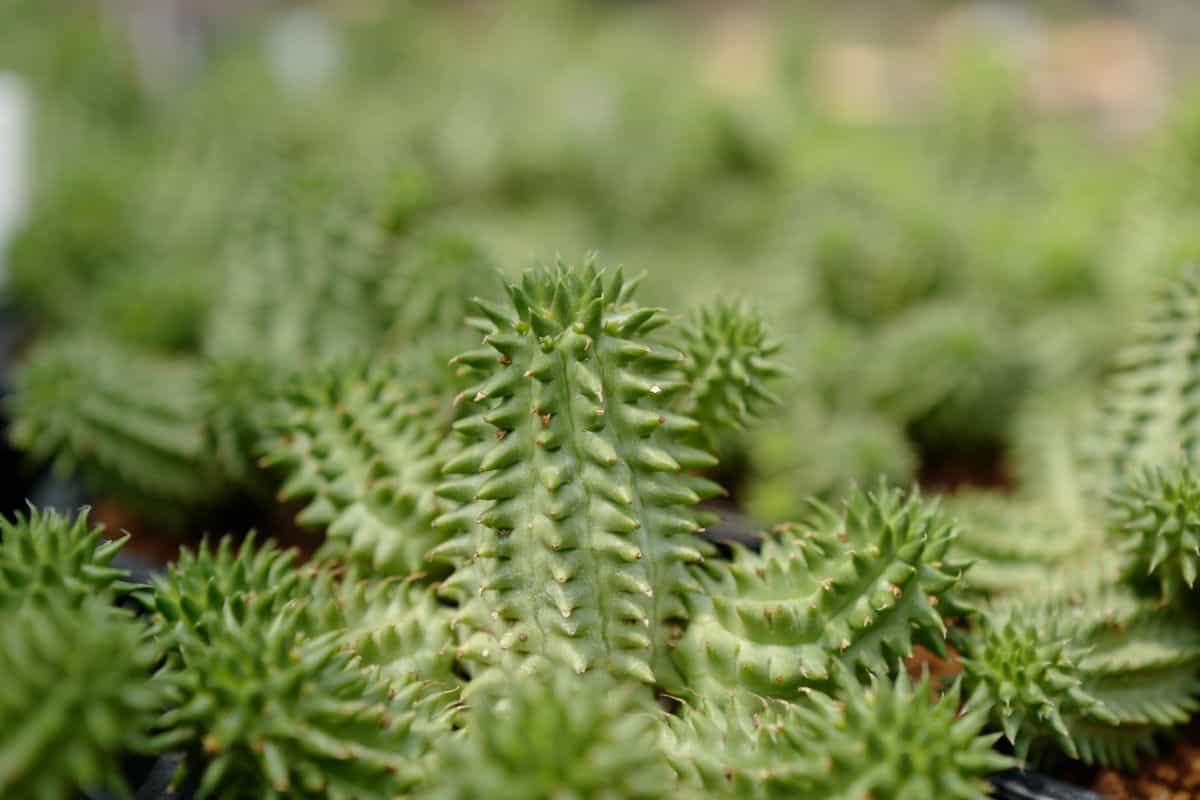
The Euphorbia Suzannae, coming from South Africa originally, is used to mild temperatures. It is not hardy enough to withstand extreme temperatures, at either end of the scale.
If you live in an area where the climate is mild, it will do well outdoors. But if the temperature frequently drops below 20° Fahrenheit in winter, it is advisable to plant your Euphorbia Suzannae in containers that can be brought indoors during severe weather conditions.
If frost is expected, your succulents should either be brought indoors overnight, or covered lightly to protect them from the frost. Exposure to heavy frost will kill your plants.
You Mat Also Like: Euphorbia Lactea Cristata - A Care Guide
Soil
The Euphorbia Suzannae will do well in most types of soil, as long as there is excellent drainage. You do not really need to worry about the PH balance of the soil, but it is essential to use a mix of succulent potting soil, and mineral grit such as perlite or pumice, or even coarse sand.
By combining these elements in equal parts, you will create a soil environment that is conducive to good drainage. Also make sure that your containers have adequate drainage holes at the bottom, to allow excess water to run off freely.
Propagating theEuphorbia Suzannae
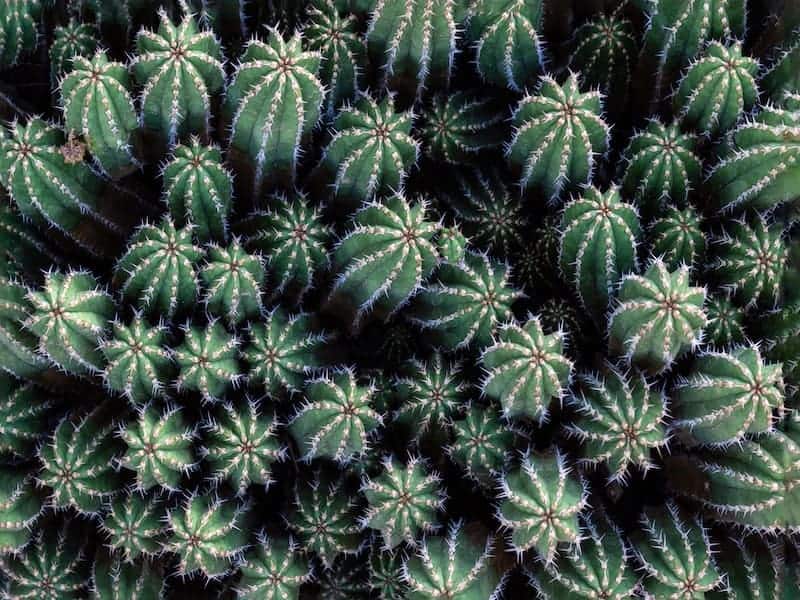
The Euphorbia Suzannae is fairly easy to propagate and will grow without too much difficulty. It can occasionally be successfully propagated from seeds, but this is not advisable.
Viable seeds are difficult to acquire. You may go to all the trouble of planting seeds and waiting for them to grow, only to find that they have not germinated.
The best way to propagate the Euphorbia Suzannae is from cuttings. Cut off a piece, using a clean, sharp pair of gardening scissors. Leave it to dry out for a few days, until it forms a callous.
Insert the calloused offcut into a pot of prepared soil, and water lightly every few days. It should soon take root, and a viable plant will start to grow. Once you have a healthy plant growing then you can start to reduce the frequency of watering.
Read Related Article: The Snowflake (Euphorbia polygona) Succulent Care Guide
Common Pests and Problems
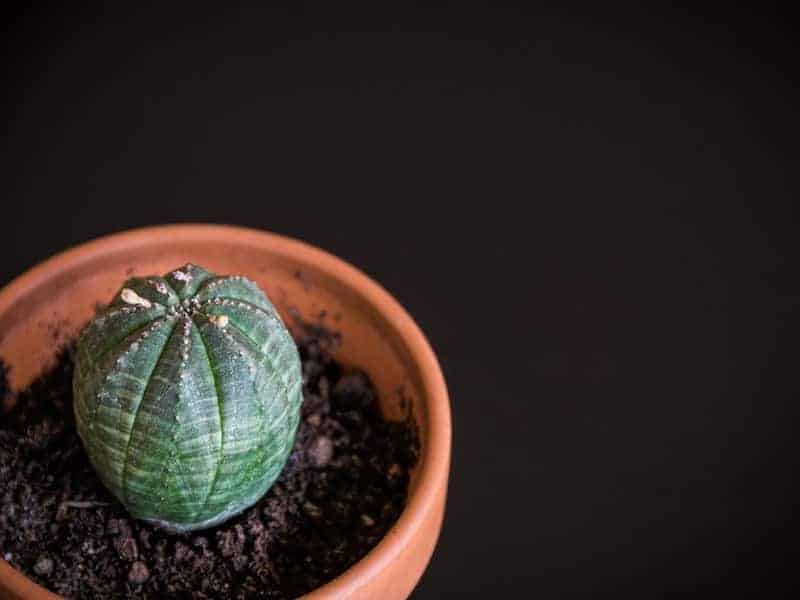
The most common problems are overwatering, which causes the roots to rot, and bug infestation.
Look out for mealybugs. These tiny little critters are only noticeable because of the fine, powdery white coating that they deposit on the leaves. The actual bugs themselves will be well hidden on the underside of the plant’s leaves.
If you do not eliminate them, they will eventually do so much damage that your plant will start to die off. There are some natural remedies that certain people claim to be effective, but the only really fail-safe method is to use a commercial pesticide.
Sources:
https://worldofsucculents.com/euphorbia-susannae-suzannes-spurge/
https://garden.org/plants/view/455814/Euphorbia-Euphorbia-suzannae-marnierae/


